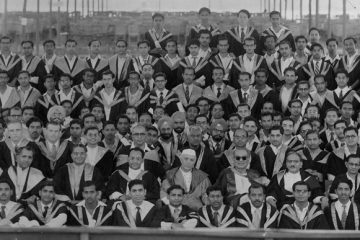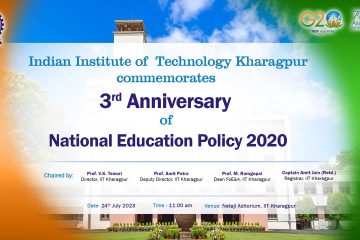
Times of India News18 India Today Business Standard Ei Samay Outlook Zee Business
Students from IIT Kharagpur have devised unique solutions for smarter & safer industrial operations ranging from detecting counterfeit currency through a mobile app, to nuclear radiation tracking through wearable sensors, to VR based human resources training at a thermal power plant.

Fake Currency Indian Notes (FCIN) have plagued the country for decades leading to not only economic losses for the country but also as the source of funds of various illegal activities even leading to breach of national security. The country has witnessed a mega initiative like demonetization in 2016. The government has also been promoting digital financial transaction which would minimize the circulation of FCIN. The banks and retail traders who manage institutional high-volume cash transactions have adopted various measures to detect FCIN. But how would an end consumer detect such a currency note? Though there are set guidelines by the Reserve Bank of India, an untrained eye can easily falter.
A group of six students from the Dept. of Computer Science and Engineering IIT Kharagpur have developed the code for a smartphone application to address this issue. T.Y.S.S.Santosh, Satish Kumar Reddy, Vipul Tomar, Sai Krishna, Drishti Tulsi and D V Sai Surya have developed an image processing application which can detect counterfeit currency. The application which can be installed on smartphones can be used by people at various touch points thus reducing the chances of fraud. Explaining the mechanism, T.Y.S.S.Santosh, the group leader said,
a user can upload a currency note image and the mobile app would verify its authenticity using 25 features extracted from the front and rear side of the currency note. In case of detection of a fake note, the user will also be notified of the failure checkpoints.
In another innovative project, the Department of Atomic Energy gave the challenge of resolving the occupational hazard of people working in the domain of nuclear-powered device. The students were asked to develop a solution for visualising and localising a 3D radiation source along with its size, shape and orientation, given the data on spatial dosage. The 6-member student team from IIT Kharagpur, comprising of Lakshay Bansal, Ch V Sai Praveen, Aditi Kambli, Rajshekhar Singhania, Ayush Mohanty, Kaustubh Agrawal, proposed a solution based on Boltzmann Transport Equations dealing with the flow of heat in fluids from hotter regions to colder ones. The students solved the reverse Boltzmann Transport Equations using the dataset for a given area to estimate the source location.
This solution is well suited to occupational workers carrying wearable sensors detecting radiation dose data. The sensors can pinpoint the location of radiation leaks in nuclear plants and refineries. The solution can also find application in medical radiation therapy or radiotherapy as part of cancer treatment to control or kill malignant cancer cells
– Lakshay Bansal, the team leader.
Another team from the Institute has developed a virtual reality-based application for the training and skill development of the workers through interactive drill based training. The solution is an interactive virtual reality environment of a thermal powerplant with simulations and guides to help operations, maintenance and performance of complex procedures in an efficient and error-free manner.
Our solution offers an economical, intuitive and gamified version of worker training through level wise learning approach. It provides a full set of interactive drills to perform along with quality assessment metrics that could be used by the supervisors to assign different jobs to workers.
– said Rohit Jain who led the team comprising Suresh Gandhi, Sumeet Aher, Ishan Bangia, Sunil Patidar, Ayushi Shakya from IIT Kharagpur.
The students proposed these solutions in the recently concluded Smart India Hackathon 2019 winning some of the top prizes in the nationwide competition held by the Ministry of Human Resources Development, Govt. of India
IIT Kharagpur also hosted the software edition of the Grand Finale of SIH 2019. The prize winners developed codes targeted on smart education solutions. Team CodeLagom developed a wearable Android IoT device for facilitating the education of differently-abled people with vision and hearing impairment. Books in PDF can be uploaded on the web platform of the device which can thereafter be streamed on the wearable device in voice and visual modes. Team LeetCoders wrote the code for a LAN-enabled smart board for classrooms which can detect handwriting in both Hindi and English languages and broadcast the content to connected boards in other classrooms. It can also solve arithmetic equations and saves notes in PDF. The third team, The Creeping Spiders, developed a smart attendance system through facial recognition by means of random image clicks in a classroom or office environment.




